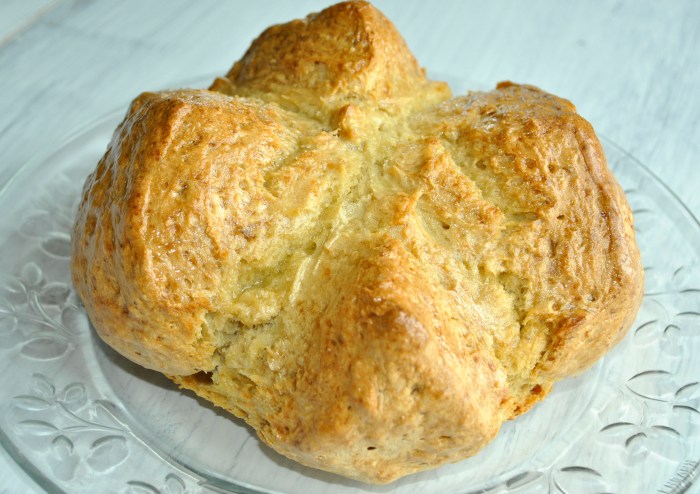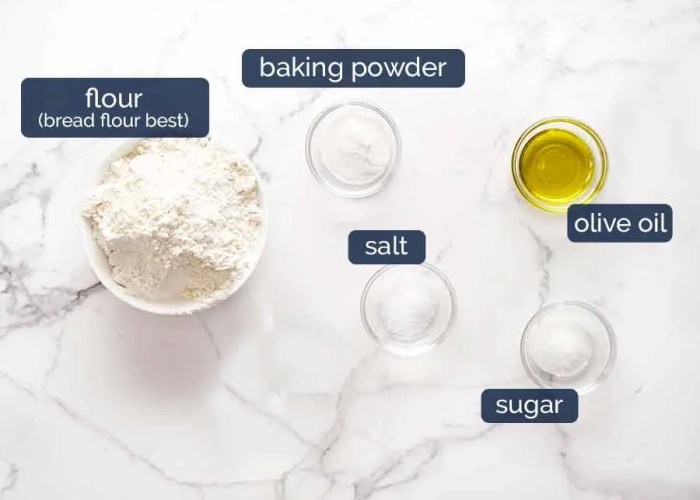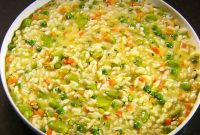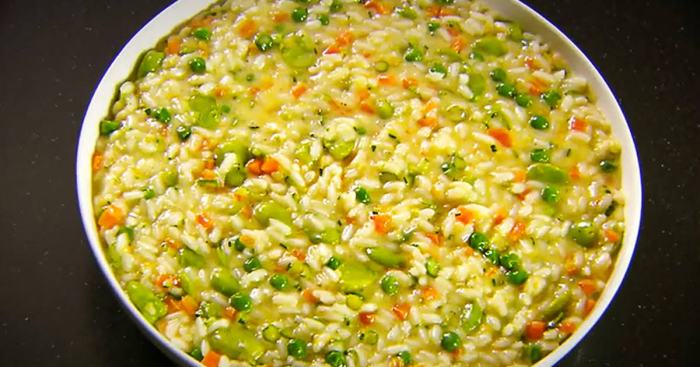How to make dough without yeast – Embark on a culinary journey as we delve into the secrets of crafting delectable dough without the aid of yeast. This comprehensive guide will equip you with the knowledge and techniques to create exceptional yeast-free doughs that will tantalize your taste buds and elevate your baking skills.
From understanding the unique properties of different flours to exploring innovative leavening methods, we will unravel the intricacies of yeast-free dough-making, empowering you to create a symphony of flavors and textures.
Introduction to Making Dough Without Yeast
Dough, a fundamental component in various culinary creations, traditionally relies on yeast as a leavening agent. However, for individuals seeking alternatives due to dietary restrictions, time constraints, or simply a desire to explore different techniques, making dough without yeast presents a viable and rewarding option.
Yeast, a fungus, facilitates the fermentation process in dough, releasing carbon dioxide gas that creates the characteristic rise and airy texture. While it remains a crucial ingredient in many bread-making endeavors, there are numerous benefits to exploring yeast-free doughs.
Advantages of Making Dough Without Yeast
- Suitable for individuals with yeast sensitivities or allergies.
- Offers a quicker preparation time, eliminating the need for proofing and rising.
- Provides a distinct flavor profile and texture, often characterized by a denser, chewier consistency.
li>Versatile for various culinary applications, including flatbreads, tortillas, and dumplings.
Types of Flour and Their Impact
Selecting the appropriate flour is crucial for achieving the desired texture and flavor in yeast-free dough. Different flour types possess unique properties that influence the dough’s characteristics.
All-Purpose Flour
- Commonly used in yeast-free dough
- Contains a moderate amount of protein (10-12%)
- Produces dough with a slightly chewy texture and neutral flavor
Bread Flour
- Higher protein content (12-14%)
- Forms stronger gluten bonds, resulting in a chewy and elastic dough
- Suitable for making flatbreads, pizza crusts, and other yeast-free breads
Whole Wheat Flour
- Contains the entire wheat kernel, including the bran, germ, and endosperm
- Higher in fiber and nutrients compared to white flour
- Produces dough with a denser texture and nutty flavor
Gluten-Free Flour
- Made from alternative grains like rice, almond, or coconut
- Suitable for individuals with gluten intolerance or celiac disease
- Requires additional binding agents, such as xanthan gum or guar gum, to create a cohesive dough
Essential Ingredients and Their Roles

Creating dough without yeast requires a combination of essential ingredients that work together to form the desired texture and structure. Understanding the roles of these ingredients is crucial for successful dough making.
Flour, How to make dough without yeast
- Types of Flour:Various types of flour, such as all-purpose flour, bread flour, and whole wheat flour, are suitable for making dough without yeast. Each type has different protein and gluten content, influencing the dough’s texture and rise.
- Role in Dough Formation:Flour provides the structure of the dough. When mixed with water, the proteins in flour (glutenin and gliadin) form gluten strands, which create a network that traps carbon dioxide and allows the dough to rise.
Water
- Hydration:Water hydrates the flour and activates the gluten proteins, allowing them to form the gluten network.
- Dough Consistency:The amount of water added determines the consistency of the dough. More water results in a softer, more pliable dough, while less water produces a firmer, more crumbly dough.
Leavening Agents
- Purpose:Leavening agents are essential for making dough without yeast. They produce carbon dioxide gas, which becomes trapped in the gluten network, causing the dough to rise and become fluffy.
- Common Leavening Agents:Baking powder and baking soda are commonly used as leavening agents in yeast-free dough. Baking powder contains both an acid and a base, while baking soda requires an acid to react and produce carbon dioxide.
Methods for Leavening Dough

Leavening dough without yeast requires alternative methods to create air pockets and a light, fluffy texture. These methods rely on chemical reactions or the use of sourdough starter to introduce gases into the dough.
Using Baking Soda and Acid
Baking soda (sodium bicarbonate) reacts with an acidic ingredient to produce carbon dioxide gas. This gas expands and creates bubbles within the dough, resulting in a leavened texture. Common acidic ingredients used with baking soda include buttermilk, yogurt, lemon juice, or vinegar.
Using Baking Powder
Baking powder is a combination of baking soda, an acid, and a starch. When baking powder is heated, the acid reacts with the baking soda to produce carbon dioxide gas. The starch absorbs moisture and prevents the gas from escaping too quickly, allowing the dough to rise gradually.
Using Sourdough Starter
Sourdough starter is a fermented mixture of flour and water that contains wild yeast and bacteria. These microorganisms produce lactic acid and carbon dioxide gas, which leaven the dough. Sourdough starter gives bread a characteristic tangy flavor and a dense, chewy texture.
To make dough without yeast, you can use baking powder or baking soda as a leavening agent. For instance, oatmeal sandwich bread is a delicious and easy bread recipe that uses baking powder to create a soft and fluffy loaf.
The bread is perfect for sandwiches, toast, or even French toast. To make dough without yeast, you can also use sourdough starter, which is a natural leavening agent that gives bread a slightly sour flavor.
Mixing and Kneading Techniques: How To Make Dough Without Yeast

Mixing and kneading are crucial steps in developing dough without yeast. These techniques combine ingredients, hydrate the flour, and create the necessary gluten structure for a successful dough.
Various mixing and kneading methods exist, each with its impact on dough development and texture. Understanding these techniques empowers you to achieve the desired dough characteristics.
Hand Mixing
- Gently combine dry ingredients in a large bowl.
- Gradually add liquid ingredients while mixing with a wooden spoon or your hands.
- Continue mixing until a dough forms and becomes slightly sticky.
Hand mixing provides good control over the dough’s hydration and gluten development, but it can be more labor-intensive.
Stand Mixer
- Place dry ingredients in the bowl of a stand mixer fitted with a dough hook.
- Gradually add liquid ingredients while mixing on low speed.
- Increase speed to medium and knead for 5-7 minutes, or until the dough becomes smooth and elastic.
Using a stand mixer is less labor-intensive and allows for more consistent kneading, resulting in a well-developed dough.
Kneading
- Turn the dough out onto a lightly floured surface.
- Fold the dough over itself and press down with the heel of your hand.
- Repeat folding and pressing for 5-10 minutes, or until the dough becomes smooth, elastic, and no longer sticky.
Kneading develops the gluten network, creating a strong and elastic dough. It also helps remove air pockets and distribute ingredients evenly.
Dough Consistency and Hydration Levels
Achieving the correct dough consistency and hydration levels is crucial for successful dough making. Dough consistency refers to the firmness or softness of the dough, while hydration level indicates the amount of water present in relation to the flour. The ideal dough consistency and hydration level depend on the type of bread or baked good being made.
Proper hydration ensures that the dough has the right balance of moisture to allow for gluten development, yeast activity, and proper fermentation. Too little water can result in a stiff, dry dough that is difficult to work with and may produce a dense, crumbly loaf.
Conversely, too much water can create a sticky, wet dough that is difficult to handle and may result in a loaf that is too soft and lacks structure.
Adjusting Water Content and Other Ingredients
Adjusting the water content and other ingredients is essential for achieving the desired dough consistency and hydration level. Start with the basic recipe and gradually add water or other ingredients as needed.
- For stiffer dough:Add more flour, a tablespoon at a time, until the desired consistency is reached.
- For softer dough:Add more water, a tablespoon at a time, until the desired consistency is reached.
- For lean dough:Increase the amount of water to create a dough with a higher hydration level.
- For enriched dough:Decrease the amount of water to create a dough with a lower hydration level.
It’s important to note that dough consistency and hydration levels can also be affected by the type of flour used, the temperature of the ingredients, and the kneading technique. Experimenting with different combinations and techniques is key to finding the optimal balance for each specific recipe.
Resting and Rising Times
For yeast-free dough, resting and rising times are crucial for developing its texture, flavor, and structure. These processes allow gluten to form, fermentation to occur, and the dough to rise.
Gluten Formation
During resting, the proteins in the flour, glutenin and gliadin, interact with water to form gluten. This network of gluten strands gives the dough its elasticity and strength, allowing it to hold its shape and rise.
Fermentation
In the absence of yeast, fermentation is initiated by enzymes present in the flour. These enzymes break down complex carbohydrates into simpler sugars, which provide nourishment for bacteria and other microorganisms in the dough.
Temperature
Temperature plays a significant role in dough development. Warm temperatures promote fermentation and gluten formation, while cold temperatures slow down these processes. The ideal temperature range for yeast-free dough is between 75-85°F (24-29°C).
Shaping and Baking Techniques
Once the dough is prepared, it’s time to shape and bake it. Shaping techniques vary depending on the desired form, such as loaves, rolls, or flatbreads. Baking techniques involve oven temperature, baking time, and steam injection, all of which impact the final product.
Shaping Techniques
Loaves:To shape a loaf, divide the dough into equal portions and form them into balls. Place the balls in a greased loaf pan and gently press down to fill the pan. Cover the pan with plastic wrap and let it rise in a warm place until doubled in size.
Rolls:To make rolls, divide the dough into small pieces and shape them into balls. Place the balls on a greased baking sheet and flatten them slightly. Cover the baking sheet with plastic wrap and let the rolls rise until doubled in size.
Flatbreads:To make flatbreads, divide the dough into small portions and roll them out into thin circles. You can use a rolling pin or your hands to flatten the dough. Cook the flatbreads on a hot griddle or in a preheated oven until golden brown.
Baking Techniques
Oven Temperature:The oven temperature for baking dough without yeast depends on the size and shape of the dough. For loaves, a temperature of 375-400°F (190-205°C) is ideal. For rolls, a temperature of 425-450°F (218-232°C) is recommended. For flatbreads, a temperature of 500-550°F (260-288°C) is best.
Baking Time:The baking time also depends on the size and shape of the dough. For loaves, bake for 30-45 minutes, or until the crust is golden brown and the bread sounds hollow when tapped. For rolls, bake for 15-20 minutes, or until golden brown.
For flatbreads, bake for 5-10 minutes, or until cooked through.
Steam Injection:Steam injection can help create a crispy crust on your bread. To inject steam, place a shallow pan of water on the bottom rack of the oven. The water will evaporate and create steam, which will help the bread develop a crust.
Troubleshooting Common Issues
Making dough without yeast can sometimes present challenges. Here are some common issues that may arise and tips for resolving them:
Dense Dough
A dense dough can result from insufficient kneading or improper hydration levels. Ensure thorough kneading to develop gluten strands and achieve elasticity. Adjust the liquid content as needed to achieve the desired consistency.
Poor Rising
Poor rising can occur due to insufficient leavening agents or inadequate resting time. Use baking soda or baking powder as leavening agents, and allow sufficient time for the dough to rise in a warm environment.
Burnt Crusts
Burnt crusts can result from excessive baking temperatures or uneven heat distribution. Reduce the oven temperature and ensure even heat circulation by rotating the baking dish during baking.
Examples of Yeast-Free Dough Recipes
Yeast-free doughs offer a variety of options for creating delicious breads, flatbreads, and pastries. Here are a few popular recipes to get you started:
Flatbreads
- Naan Bread:Made with a combination of all-purpose flour, yogurt, and baking powder, naan is a soft and fluffy flatbread that pairs well with curries and stews.
- Tortillas:A staple of Mexican cuisine, tortillas are made with masa harina (corn flour) and water. They can be used for tacos, burritos, and enchiladas.
- Pita Bread:Originating in the Middle East, pita bread is a pocketless flatbread made with wheat flour and water. It can be used for sandwiches, dips, or as a side dish.
Pizza Crusts
- Basic Pizza Dough:Made with all-purpose flour, water, olive oil, and salt, this dough can be used for a variety of pizza toppings.
- Whole Wheat Pizza Dough:Similar to the basic pizza dough, but made with whole wheat flour for added fiber and nutrients.
- Gluten-Free Pizza Crust:Made with a combination of gluten-free flours, such as almond flour, tapioca flour, and coconut flour, this dough is suitable for those with gluten sensitivities.
Bread Rolls
- Soda Bread:A quick and easy bread made with all-purpose flour, baking soda, buttermilk, and salt. It has a dense and crumbly texture.
- Cornbread:Made with cornmeal, all-purpose flour, baking powder, and milk, cornbread is a sweet and savory bread that pairs well with chili and other hearty dishes.
- Baguettes:A classic French bread made with white flour, water, salt, and yeast. While yeast is typically used in baguettes, there are recipes available for yeast-free versions.
Epilogue
As you master the art of dough-making without yeast, a world of culinary possibilities awaits. Whether you seek the rustic charm of sourdough bread, the crispy crunch of flatbreads, or the soft embrace of dinner rolls, this guide will be your steadfast companion, empowering you to create an array of delectable treats that will delight your family and friends.








